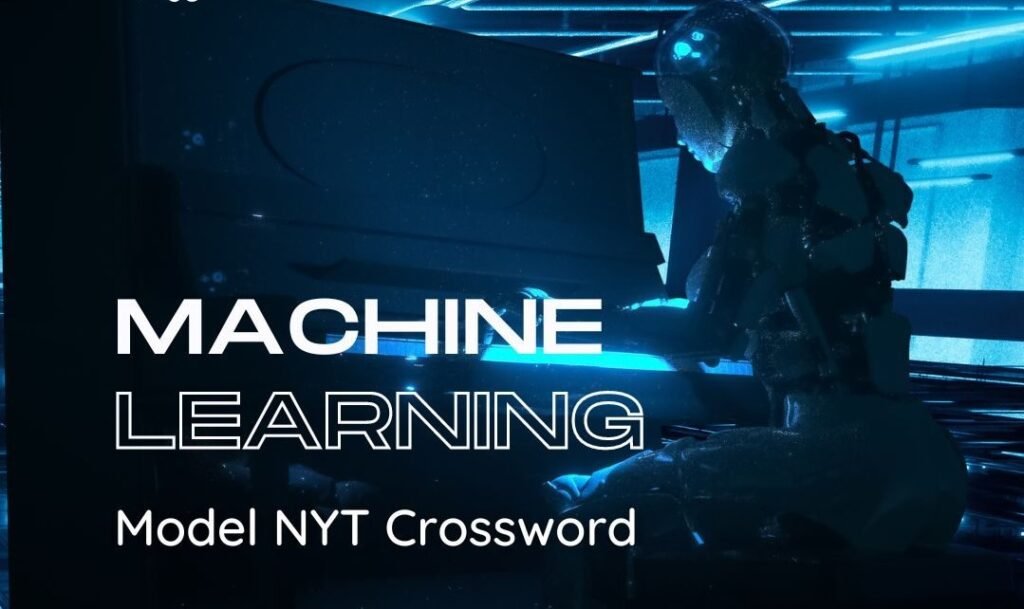H1: The Role of Machine Learning Models in Enhancing the NYT Crossword Experience
In recent years, crossword enthusiasts and casual solvers alike have noticed significant changes in how the New York Times (NYT) crossword puzzle functions. These changes are not just a result of the evolution of puzzle creation but are closely tied to the advancements in artificial intelligence (AI) and, more specifically, machine learning (ML) models. This article will explore the intersection of machine learning models and the NYT crossword, providing insights into how these technologies are shaping one of the most popular puzzles in the world.
The Growing Influence of Machine Learning in Crossword Puzzles
Machine learning has come a long way from its early applications in data analysis and predictive modeling. Today, its influence extends to entertainment, and one fascinating use case is in crossword puzzles, particularly the NYT crossword. ML models are now being employed to create, analyze, and even solve crosswords, transforming the traditional puzzle-solving experience.
One of the reasons machine learning fits so well with crossword puzzles is its ability to process language. Crosswords are deeply rooted in linguistics, and ML, through natural language processing (NLP), can recognize patterns, understand meanings, and predict answers based on context. This makes machine-learning models ideal for working with the NYT crossword, which is known for its witty clues and language-based challenges.
What Are Machine Learning Models?
Before diving deeper into how machine learning models impact the NYT crossword, let’s first define what ML models are. Machine learning models are systems developed to analyze data, recognize patterns, and adapt their behavior based on experience. They analyze historical information, identify patterns, and make predictions or decisions without being explicitly programmed for specific outcomes.
In the context of crossword puzzles, these models can be trained on various aspects, including:
- Word Frequency
- Semantic relationships between words
- Common crossword clues and answers
- Puzzle difficulty levels
Once trained, machine learning models can assist in creating puzzles, suggesting clues, and even solving puzzles by predicting the correct answers. For the NYT crossword, this has opened up new possibilities for both puzzle creators and solvers.
How Machine Learning Is Used in NYT Crossword Creation
Creating a crossword puzzle, especially one as popular as the NYT crossword, requires a deep understanding of language, culture, and puzzle structure. Traditionally, crossword puzzles were crafted by skilled constructors who manually designed the grid, wrote the clues, and ensured that the puzzle was both challenging and solvable.
Today, machine learning models are playing an increasing role in the puzzle creation process. By analyzing past NYT crossword puzzles, ML models can generate new grids, suggest words that fit into the puzzle’s structure, and even propose witty clues that maintain the puzzle’s signature style.
Automating Puzzle Construction
One of the most time-consuming aspects of creating a crossword puzzle is filling the grid. The grid must adhere to strict rules: words must intersect, no two-letter words are allowed, and the puzzle should be both challenging and solvable. This is where machine learning models truly excel. They can be trained on thousands of NYT crossword grids and solutions, enabling them to generate new grids that meet the required specifications.
ML models can also evaluate the difficulty level of a puzzle, ensuring that it fits the intended audience. For example, a Monday NYT crossword puzzle, which is typically easier, would require different word choices and clue styles compared to a Saturday puzzle, which is known for its difficulty.
Generating Clues
Another fascinating application of machine learning models is clue generation. The NYT crossword is famous for its clever and often cryptic clues. Machine learning models, trained on past clues, can generate new ones by recognizing patterns in how clues are structured. These models can also use semantically related words to create clues that are more interesting and engaging for solvers.
For instance, an ML model can generate multiple clues for a single word by understanding synonyms, homophones, and wordplay. This diversity in clue generation ensures that puzzles remain fresh and exciting, even for seasoned solvers.
Machine Learning for Solving NYT Crosswords
While machine learning models are increasingly being used to create crosswords, they are also revolutionizing how puzzles are solved. Various apps and tools now use machine learning to help users solve crossword puzzles more efficiently.
Crossword Solver Apps
Several crossword-solving applications are powered by machine-learning models that analyze clues and suggest possible answers. These apps are particularly useful for solvers who may be stuck on a difficult clue. By inputting the clue and the known letters, the app can use machine learning algorithms to predict the most likely answers.
For example, if a solver enters a clue like “Home of the Vikings” with the letters “M_NN__P_L_S,” the machine learning model can suggest “Minneapolis” based on its knowledge of U.S. geography, sports teams, and letter patterns.
Predicting Crossword Difficulty
Another way machine learning models are assisting solvers is by predicting the difficulty of a puzzle. By analyzing past puzzles and user performance data, ML models can estimate how difficult a particular puzzle might be. This allows solvers to choose puzzles that match their skill level or challenge themselves with more difficult puzzles.
ML models can even offer hints by analyzing word patterns and suggesting semantically related words. This makes the NYT crossword more accessible to a broader audience, including those who might have previously found it too difficult.
How NLP Enhances Machine Learning Models for Crosswords
Natural language processing (NLP) is a key component in the success of machine learning models when it comes to crosswords. NLP allows machines to understand and interpret human language, making it particularly useful in crossword puzzles, where wordplay and semantics are central.
By leveraging NLP techniques, machine learning models can analyze clues, detect word relationships, and generate accurate answers. For example, NLP can help models understand homophones (words that sound the same but have different meanings), metaphors, and idioms, which are often used in crossword clues.
The more advanced the NLP, the better the machine learning model can perform. With each new crossword puzzle that is processed, these models continue to improve, making them more accurate and efficient over time.
A Poetic Take on Machine Learning and Crosswords
In grids of words, where meanings hide,
Machine learning walks with a silent stride.
Through clues it dances, solving fast,
A future where the past is cast.
With every square, a challenge is met,
It learns the patterns we forget.
From words entwined in the cryptic thread,
It guides us where the path is led.
The Future of Machine Learning in Crosswords
The future of machine learning in crossword puzzles, particularly with the NYT crossword, is incredibly exciting. As ML models become more sophisticated, they will likely play an even larger role in both puzzle creation and solving.
We can expect to see:
- More Personalized Crosswords: Machine learning models can analyze a solver’s preferences and skill level, generating custom puzzles tailored to the individual. This would create a more engaging experience for solvers at all levels.
- Advanced Puzzle Analysis: Machine learning models could offer detailed feedback on a solver’s performance, pointing out patterns in mistakes and offering suggestions for improvement. This could help solvers improve their skills over time.
- Integration with Other Technologies: As voice recognition technology improves, solvers can interact with crossword puzzles using voice commands. Machine learning models would analyze spoken clues and suggest answers in real time, making the experience more interactive.
Final Thoughts and Questions to Ponder
The marriage of machine learning models and the NYT crossword represents a fascinating fusion of tradition and technology. As AI continues to evolve, it will likely further enhance both the creation and solving of crosswords, bringing this beloved puzzle into the digital age.
For crossword enthusiasts and AI aficionados alike, several questions arise:
- Will machine learning models ever fully replace human constructors in crossword creation?
- Can these models capture the nuanced humor and wordplay that make the NYT crossword unique?
- How will AI-driven tools impact the satisfaction of solving a puzzle independently?
Answers:
- While machine learning models are incredibly powerful, they are unlikely to completely replace human constructors. The creative flair and personal touch that human constructors bring to crossword puzzles are difficult for machines to replicate. However, ML models can serve as valuable tools that assist in creating, and ensuring puzzles remain fresh and challenging.
- Machine learning models, especially those utilizing advanced NLP techniques, are improving their ability to generate clever and engaging clues. However, there will always be an element of creativity that machines might struggle to capture fully. Human input will likely remain essential in maintaining the unique style of the NYT crossword.
- AI tools that assist solvers can enhance the experience for some, but purists may prefer the traditional challenge of solving puzzles without assistance. The key lies in offering a variety of options, allowing solvers to choose whether they want to use AI-powered tools or not.


